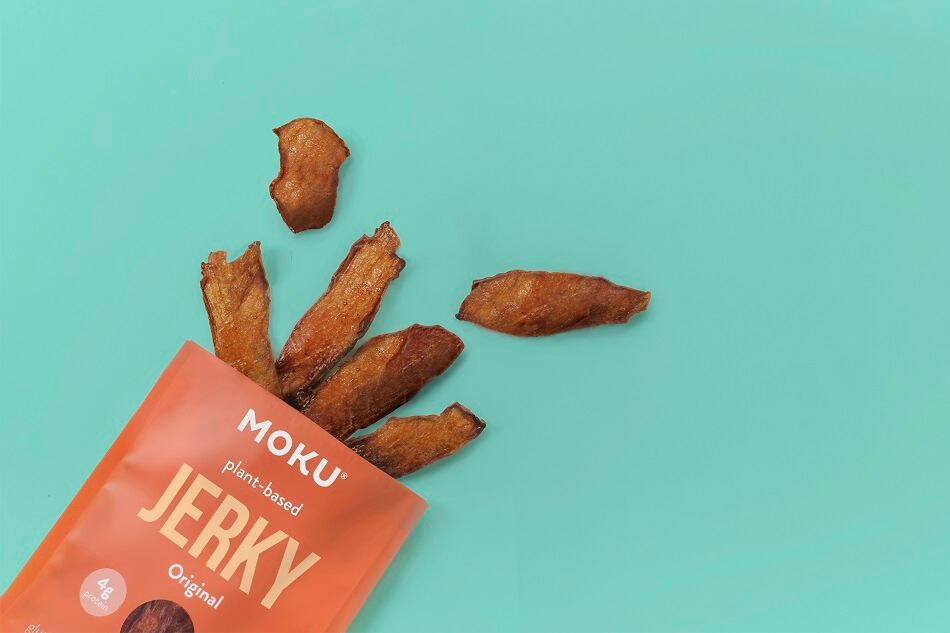KRAVE established the premium jerky set over ten years ago with its tender cuts of whole muscle beef and culinary-forward flavors, paving the way for a flurry of other brands to enter the market.
And while premium jerky may no longer be a niche market (at its height in 2016 KRAVE generated $125m in sales), the category has become “murky” with no clear definition of what constitutes as a premium jerky brand, said Sebastiani, who defines premium as products made from high-quality meat (e.g. grass-fed beef, free-range turkey), culinary-driven flavors, and eco-friendly packaging.
Sebastiani firmly believes that KRAVE and its product assortment, which plays in all meat snack segments, will redefine and solidify the premium jerky category.
'We have fought for the last 11 months to stabilize our business'
Speaking to FoodNavigator-USA, Sebastiani explained how the product quality that set KRAVE apart in its early days had deteriorated as the brand scaled under Hershey’s ownership.
“I think there were fundamental areas within the business that needed to be fixed. At times, when businesses scale and trade hands they lose their focus on perhaps the most important part of any business, which is the quality of the product,” he said.
Sebastiani noted how consumers had abandoned the brand and that distribution declined in 75% of its retail accounts. But now the brand is beginning to see its effort to redirect course pay off.
“We have fought for the last 11 months to stabilize our business to prove to the retailer we deserve to stay on shelf or be reconsidered for shelf placement,” he said.
Consumer studies have revealed that while consumers may have drifted away from the brand over the past five years, KRAVE is still considered to be a leader in the premium jerky set, according to Sebastiani.
“We’ve done scores of consumer studies that on an aided and unaided basis show that KRAVE is still viewed as the top premium brand in the country.”
Branding refresh
How exactly does KRAVE plan to win back its consumers? Sebastiani said that the company has embarked on a comprehensive brand refresh featuring a vibrant color profile and more “cosmopolitan” look and feel.

“It was important to us that the packaging change was different enough to tell the consumer that something very different is going on. If you were a consumer of KRAVE that left the brand due to quality reasons or any other reasons, it’s going to communicate to you that this is a very different vision,” he said.
The brand will still feature its iconic genderless running figure in the packaging refresh as a nod to its fitness- and health-focused roots, and lean into partnerships such as its recent one with snowboarder Shaun White who has joined the brand as investor and global brand ambassador.
The new packaging, which is due to hit retail shelves in May, will also use other premium differentiators such as a ‘Grass-Fed’ call out on its beef jerky products and more creative, culinary-forward flavors.
“We don’t want to do ‘peppered’, we don’t want to do ‘original’… We want to really drive a more premium experience which I think delivers the enjoyment factor – the surprise and delight,” said Sebastiani.
Plant-based jerky: ‘It is a focus, one of many’
In terms of new product innovation, KRAVE has embraced the plant-based jerky line introduced by Hershey right before the brand switched ownership and believes that a plant-based offering could help grow the overall jerky category.
“There are many consumers that like the jerky eating experience but just don’t want more meat in their diet. You’re opening up a broader user experience,” he said.
The company has had several national retailers sign on to carry its plant-based jerky line (which will be place alongside meat-based products in the jerky aisle), but Sebastiani added that the team is working on improving the manufacturing of the product.
“There are certain manufacturing realities in producing this product that create a little bit of variability. We do believe there’s some continuous fine-tuning and some room for improvement.”
Value of the premium jerky category
Aside from reclaiming lost shelf space, Sebastiani believes KRAVE and the premium jerky category at large has a lot more runway ahead of it and that consumers are craving more choice at shelf.
The majority share of the $2.8bn US jerky category has long been held by two dominant players: Conagra Brands (Slim Jim) and Jack Link’s, according to Mordor Intelligence.
“There’s a lot of category work to do,” said Sebastiani.
“If you look at the market share those two companies represent, we believe consumers want more optionality and we just have to do the work to increase distribution to make sure consumers have the choice in front of them. There are too many doors today that still only have two options.
“We think KRAVE has a unique opportunity to help drive that premium discussion with retailers. I think that delivers a healthy overall category when there are clear lines between value, private label, mass, and premium.”
Asked about how jerky sales have fared over the course of the past year due to less on-to-go consumer behavior which the category has historically been reliant on, Sebastiani said that the category faced some headwinds, but overall is still a growing category.
“For every category there’s noise especially from 2020… but I don’t believe it’s a true reflection of any softening of the category,” he said.




